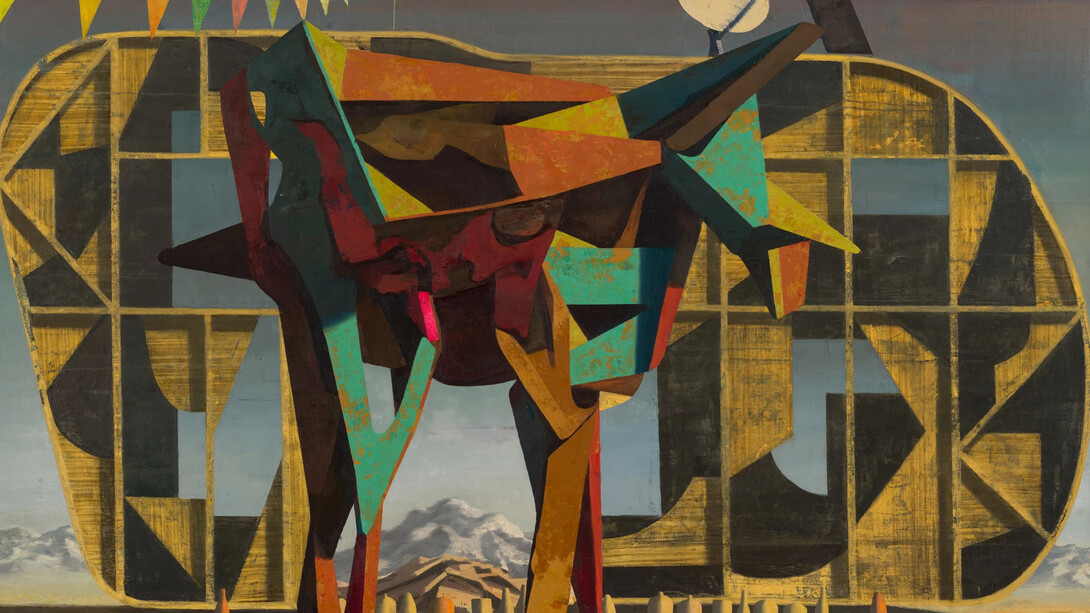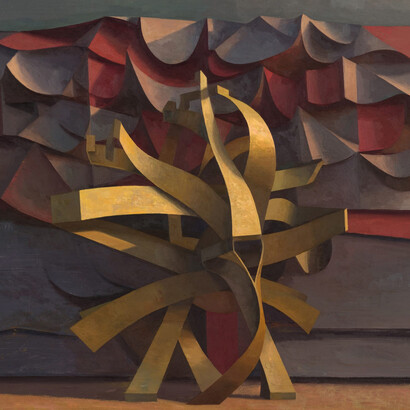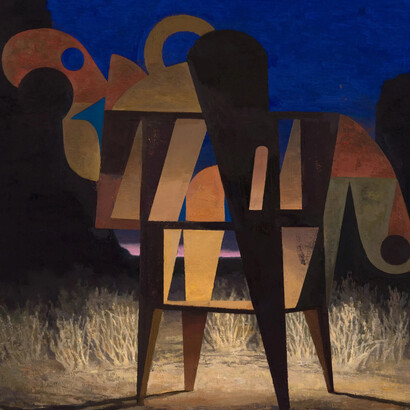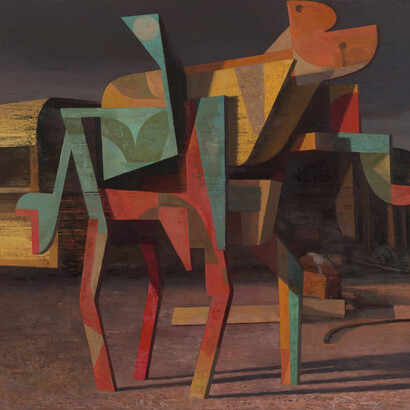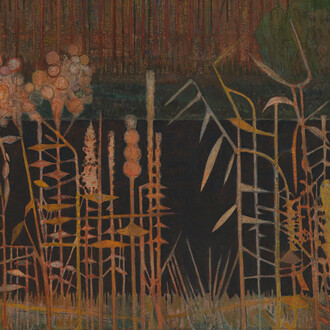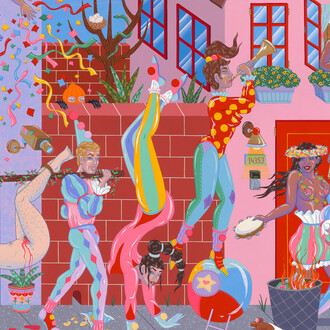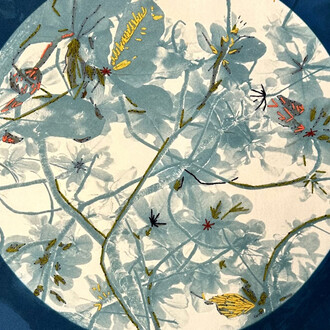Philip Martin Gallery is pleased to present Dry season, an exhibition of new oil-on-canvas paintings by Los Angeles-based artist Daniel Dove. Dove’s works consider modern American life through the lens of Realism, a painterly approach popularized by Gustav Courbet that focuses on depicting, “ordinary life and people with accuracy.”
Daniel Dove’s paintings bring together the surreal paradoxes of our current age. His work engages the materiality of oil painting, an intensive traditionally physical medium of pigments, solvents, canvas and brushes; governed by touch and gesture; animated by and finding meaning in the ways in which we experience pictures today. At the same time, Dove’s work considers the ways in which all kinds of images function in the third decade of the 21st-century, which for most of us is increasingly disembodied. Pinged by alerts, many of us float almost Escher-like with large parts of our experience figured in aggregated online communities, subreddits, video games, newsfeeds and Instagram. We watch over our shoulders for Chat GPT, Midjourney and other AI platforms and their perceived power of bringing down “too big to fail” virtual experiences that increasingly seem to shape non-virtual day-to-day realities.
In his new body of work, Daniel Dove uses uses digital and physical models to generate a range of earthly landscapes populated by ad-hoc structures. The paintings he derives out of these images - his world-building practice - finds a close parallel in the sort of image-making highlighted in Arnold Böcklin, Giorgio de Chirico, Max Ernst: A journey into the uncertain, the major exhibition organized by Kunsthaus Zürich curators Guido Magnaguagno and Juri Steiner in 1997. This show charted the 1920’s re-discovery of Swiss Romantic Arnold Böcklin by Giorgio de Chirico and Max Ernst, two Surrealists living and working in Paris in the years immediately after the industrialized killing of World War 1, in the lead up to World War 2. De Chirico and Ernst found in Böcklin’s art a 19th-Century vision removed from their time, yet akin to its feeling, a possible key to their own efforts in navigating the urbanized mass-consumer/mass-media environment of the French capital and the jostled epoch in which they found themselves.
Sound familiar? In a similar vein, a jumping off point for Daniel Dove’s pictures is the “junk sculpture” one finds in the deserts of Southern California. These odd ad-hoc artworks seem odd in many respects. But yet they resonate, as people have always gathered materials and made things from them in order to shape new forms and ideas. “As one moves east from Los Angeles into desert communities such as Slab City,” Dove notes, “one encounters a genre of visionary art that seeks to reanimate ‘dead’ materials built from remnants of structures originally designed for utility and play. These fictive versions include mutant and fantastical animals, as if nature 2.0 has been resurrected from the ruins of late capitalism to repopulate a pristine wasteland.” Dove’s pictorial sense is rich with detail, full of beautiful brushwork and dynamic color, as if one was driving through, or stumbled into, a painting by Yves Tanguy, another early 20th-Century Surrealist working in Paris. Daniel Dove’s constructed paintings prompt curiosity with regard to the world in which we live, offering an opportunity to think about and reflect on how we got here, what lies ahead for us and our species.
